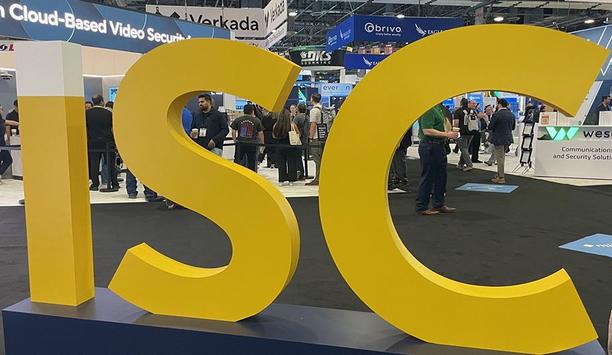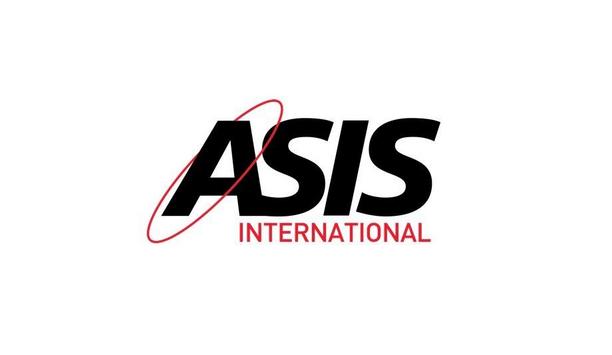Mobile Access Trends

ISC West 2025 in Las Vegas showcased the latest advancements in security technology, offering security professionals a glimpse into the future of the industry. This year's expo highlighted the growing influence of artificial intelligence (AI), cloud computing, and enhanced integration. The pioneering comprehensive and converged security event attracted nearly 29,000 industry professionals to the Venetian Convention Centre. Integration into unified platforms Several companies emphasised the importance of cloud-based solutions and the integration of diverse security components into unified platforms. For example, Brivo's Security Suite provides “everything in one platform” – not just access control. Customers only pay for what they use because the system is flexible and scalable from a single door to enterprise level applications. Brivo’s suite includes video, but the system can also tie in with third-party “partners.” Genetec's Security Centre allows for more frequent updates through the cloud. Milestone is undergoing a two-year transition to bring its Xprotect system into the future by incorporating Arcules and Briefcam into a video-as-a service product. Suprema introduced BioStar X, which integrates access control and video analytics into a single platform. AI and mobile credentials Axis Communications’ Cloud Connect product announced three new partnerships at ISC West 2025 Axis Communications’ Cloud Connect product announced three new partnerships at ISC West – Eagle Eye Networks, SecuriThings, and Wesco. They join the three partners announced during the first year of Axis Cloud Connect – Genetec, Kone (elevators) and Milestone. AI and mobile credentials were still hot topics at ISC West 2025, but the conversation has evolved beyond amazement at the technologies’ capabilities and now centres on more practical aspects. From the theoretical to the practical “AI and mobility are still the ‘flavors de jour,’ but messages are evolving to manifest AI for better outcomes,” says Heather Torrey, General Manager, Commercial Security, Americas, for Honeywell Building Automation. The company has reframed its security portfolio to be very building- and business-focused, continuing to grow and evolve after the recent acquisition of LenelS2. “From the theoretical to the practical, we want customers to be part of the conversation so we can deliver AI that is meaningful to them, focusing on what’s most important,” says Torrey. Under Honeywell’s new ownership structure, “each part of the business can be more focused on customers’ needs,” she says. Honeywell continues its journey around mobile access and credentialing and migrating to cloud solutions. Innovations in Access Control Gallagher’s new Quickswitch access control board simplifies the migration from legacy systems Access control remains a critical component of security systems, and ISC West 2025 showcased several innovations in this area. Acre is releasing “Gallery,” its version of the App Store for access control. DormaKaba is launching the Keyscan KC Series door controller with TCP/IP connectivity and enhanced features. Gallagher’s new Quickswitch access control board simplifies the migration from legacy systems. Johnson Controls highlighted its C-Cure command centre and C-Cure IQ web client, offering a unified approach to access control and video. Hardware integrations for security panels For service provider Alarm.com, hardware products prepare a path to greater customer experiences, says Abe Kinney, Alarm.com’s Director, Product Management, who oversees hardware integrations for security panels, sensors, video, etc., and drives new product development. “We are looking to bridge the physical world to digital world,” he says. “We want to bring an advantage to our dealers that they can bring to customers.” Because Alarm.com’s customers pay a monthly fee, the products must be durable and economical, says Kinney. “It should work with no need for truck rolls.” The importance of longevity and flexibility Products are evaluated based on features, price, and ease of installation Products are evaluated based on features, price, and ease of installation. In particular, longevity is important for the Alarm.com’s pro channel. There is also a growing emphasis on deterrence industrywide. Says Kinney: “We recognise that detection is part of it, but we need to prevent problems from happening in the first place. And the industry is re-evaluating.” When it comes to cloud intelligence, Eagle Eye Networks puts the emphasis on flexibility. They offer AI that can perform anywhere on the system infrastructure, on the camera, on their on-site bridge device, or in the cloud. They support their own AI and also any AI product from a third party. “We focus on what customers want from the data AI detects,” says Hans Kahler, Eagle Eye Networks’ Chief Operating Officer. Integration with other systems A timely alert from gun detection could save a life, but AI can also generate information that might be used and analysed later, such as point-of-sale information, dwell time, foot traffic, etc. “What people want is the ability to work with the data for business intelligence,” says Kahler. Integration with other systems provides new opportunities for customers: For example, a licence plate reader at a restaurant drive-thru could trigger customisation of the menu board digital signage based on the customer’s previous buying pattern. Relentless Innovation Assa Abloy handles more than 40 million SKUs for all its various brands, faked in 28 factories in the US Assa Abloy handles more than 40 million stock keeping units (SKUs) for all its various brands manufactured in 28 factories in the United States. Merely complying with regulations such as the “Buy American Act” is a monumental effort considering the massive product line, attendees heard at Assa Abloy’s Annual ISC West Breakfast focusing on compliance challenges in the security market. Meanwhile, back at the trade show booth, Assa Abloy focused on “relentless innovation” in every corner of its product line. Assa Abloy’s message: Innovation in security does not have to be about AI or automation. In fact, inventive approaches to products come in all shapes and sizes and at every level of the product portfolio, and innovation is happening faster than ever. For example, the Safebolt product from Securitech, a brand recently acquired by Assa Abloy, can quickly lock down existing doors with the press of a red button on a cylindrical or mortise lock. Temporary Systems to Secure Events Securing events is the focus of Allied Universal's Unified Command Solutions, which specialises in setting up temporary security systems for conventions, trade shows, festivals, construction sites, parades, and other events. They can add technology to situations where previously mostly security officers were used, providing safety/security and enabling more efficient event operation. “We can put cameras anywhere, whether they need power or not, use cell service or WiFi, a localised network or the internet, or whatever,” says Andrew LaMadrid, VP, Sales for Allied Universal's Unified Command Solutions. Event operation and management IDIS came to ISC West looking to leverage new products that they did not promote in the past The focus is on easy implementation, flexibility, and fast setup and removal. “We look for a solution to solve each customer’s pain points,” says LaMadrid. They specialise in setting up and deploying surveillance cameras for safety/security and for event operation and management. Mobile surveillance is a relatively new “piece of our puzzle” when it comes to protecting high-profile events. “People are excited about what we can offer that’s new,” says LaMadrid. Unified Command Solutions has been around for about 12 years and was acquired by Allied Universal last summer. IDIS came to ISC West looking to leverage new products that they did not promote in the past, and visitors were very interested in those solutions, says Scott Switzer, IDIS CEO. “The progression of our product line has been tremendous,” he says. Last year, the IDIS booth offered only basic analytics, but this year they had 30 different advanced analytics including gun and aggression detection using the advanced solution “IDIS Vaidio AI.” What Makes You Different? The most common question IDIS hears at their trade show booth is: “What makes you different?” The answer: They offer an end-to-end solution, including cameras; they manage, control, design from end-to-end; and there is no need for multiple integrations. The time needed to install an IDIS system is significantly less because of the simplicity. “We have customers we have supported and grown together for over 20 years,” says Switzer. The company previously deployed IDIS cameras under the Costar brand before the Korean IDIS brand was introduced into the U.S. (IDIS purchased Costar and changed the name to IDIS America.) “This has been a tremendous show for us; we are looking to build our momentum and let more people know about IDIS,” says Switzer. Managing real AI at the edge The depth of their metadata enables new applications, whether for security or business operations Based in Prague, Czech Republic, and with U.S. offices in Pennsylvania, FF Group provides licence plate recognition for harsh environments. Using Axis cameras, they offer “managed real AI at the edge,” selling through a nationwide distributed network, says Alex Osypov, CEO and Founder of FF Group. Markets include parking lots, cities/municipalities, police, government, water systems, etc. The depth of their metadata enables new applications, whether for security or business operations. They are looking to combine and correlate data including LIDAR, RADAR, etc. to exploit the advantages of “data fusion.” Osypov says: “The market is growing because we are involving other adjacent markets.” Unified platforms and advanced tools Several companies are focusing on enhancing security operations centres (SOCs) by providing unified platforms and advanced tools. Axon’s Fusus system “layers” onto existing infrastructure, tying together various sensors into a single interface for real-time monitoring and information sharing. Increasingly, enterprises have invested in a lot of technologies – ac, video, asset trackers – but none of it talks together. Fusus ties all the systems together so that operators no longer have to look at 10 different screens. Rather, there is a “single pane of glass” that shows everything and facilitates sharing of information with law enforcement. Motorola also showcased its Security Operations Centre, which integrates hardware, software, smart sensors, communication radios, and broadband devices to streamline incident management.

Physical security technologies are a prominent tool used by correctional facilities to provide a safe, secure, and controlled environment for staff, inmates, and the wider community. Among several functions, security technologies are used to prevent unauthorised access, to detect contraband, to monitor inmate movements and activities, and to protect staff. For security technology manufacturers, integrators and consultants, the corrections market presents distinctive challenges. We asked our Expert Panel Roundtable: What are the unique aspects of the corrections market, and how should the physical security industry adapt?

New technology advancements significantly increase efficiency and productivity in any industry, including physical security. Enhanced innovation both creates new products and services and improves existing products, all for the benefit of security manufacturers, integrators, and end users. Companies that embrace new technology stay ahead of the curve and gain a significant competitive advantage. In addition, they can differentiate themselves in the marketplace. We asked this week's Expert Panel Roundtable: What are the most promising new technologies in the physical security industry?

Access control solutions will continue their evolution in 2025 as organisations assess and adapt to dynamic and increasingly dangerous threats. Trends to watch include the growing adoption of mobile access credentials and digital IDs, and the integration of digital and physical security and other technologies. Other ongoing trends include the integration of AI into access control solutions and the increasing adoption of contactless biometrics for enhanced convenience. New access control innovations As these trends gather momentum, they highlight the pivotal role access control systems play in combining security and convenience, every hour of every day. Organisations must strike the ideal balance between a secure environment and satisfying user experience if they are to meet increasingly vocal demands for both. Achieving this balance not only delivers the expected user experience but also delivers multi-layered threat protection while introducing exciting new access control innovations. Digital technologies and open standards Modern access control solutions deliver a faster pace of innovation and dramatically improved capabilities Modern access control solutions deliver a faster pace of innovation and dramatically improved capabilities as compared to what was possible in the past. The primary objective is no longer simply to secure places and assets so they are beyond the reach of the wrong people. Now it also must be as easy as possible for authorised individuals to enter a building or access digital assets. Mobile access credentials and digital IDs are increasingly a preferred solution for achieving this seamless and convenient access experience. Technology convergence is happening at a rapid pace and this convergence makes it possible to integrate digital and physical security with real-time location systems and other technologies. Together, these converged technologies provide multi-layered protection against both cyber and physical threats while also enabling valuable new capabilities. 2024 State of Physical Access Control Report As AI is increasingly incorporated into access-control solutions, we will see even more powerful ways to leverage access control data for analytics use cases. Almost 40% of respondents to our 2024 State of Physical Access Control Report said they were looking to do this. Equally consequential is the rise of fast, frictionless and easy contactless biometrics solutions in a wide range of applications including healthcare, where 32% of respondents to our recent 2024 State of Healthcare Security Report said their facilities have already implemented this technology for authentication. Looking at the broader marketplace, nearly one in four (23%) respondents to our 2024 State of Physical Access Control Report cited biometrics when asked to “name the top three trends shaping the wider access control industry in the near future.” Evolution of access control solutions As access control solutions become increasingly central to secure and convenient daily life, these and other trends will have an ongoing impact on all market sectors from healthcare and banking to the corporate real estate enterprise and business and college campuses. At the same time, those responsible for a facility’s digital and physical assets know that these trends – and security in general – will never be a static proposition. The only constant is change. Threats will never stop evolving, and those tasked with protecting organisations against these threats must never stand still. The evolution of access control solutions that we saw during 2024 will continue through 2025 and beyond, and organisations will need to remain thorough and vigilant as they address today’s ever-expanding attack surfaces and ever-evolving attack schemes.
Latest Access control news

AMG Systems of the United Kingdom and the USA introduces the AMG Secure-Net SFP carrier, an SFP-based IP-level device that offers 128-bit encryption for traffic over any IP network. This device operates as an SFP carrier and can host most standard MSA-compliant 100Mb or 1Gb SFP modules. The Secure-Net SFP carrier transparently envelopes a wide variety of SFPs, enabling full reuse of existing equipment and easy deployment across various infrastructure types, including both fibre and copper lines. The SFP carrier The SFP carrier is easy to use with standard MSA-compatible SFP ports on AMG switches The SFP carrier is easy to use with standard MSA-compatible SFP ports on AMG switches, media converters, and third-party devices, including switches, routers, and servers from other manufacturers. This removes the need for external power, saving space and reducing cabling costs. The Secure-Net SFP carrier supports end-to-end static IPsec in transport mode for highly secure 128-bit AES-GCM-ESP encrypted network links in both point-to-point and multipoint deployments. Network security Steve Clarke, AMG's Managing Director, confirms, “AMG is known for our innovative approach to solving our customers’ challenges. Network Security is more important than ever.” “With the AMG Secure-Net SFP Carrier, any device on the network that requires the highest level of security can now be cost-effectively secured using Secure-Net.” Secure-Net SFP carriers Tom Exley, AMG Technical Director, adds, “These Secure-Net SFP carriers are a cost-effective alternative to larger overall solutions.” “In addition, complete out-of-band management ensures the highest levels of security with no access to the configuration of the Secure-Net device from within the network or from its local host device.” Data transmission equipment AMG Systems offers an extensive line of fibre optic, copper, and wireless Ethernet video “The Secure-Net SFP Carrier is another example of a product designed to provide a definitive solution to a known challenge. The product is available now and can be ordered through all AMG channels,” adds Frank Haight, AMG VP of Marketing. AMG believes that having products in stock and being fully supported by the AMG design team gives AMG customers worldwide a measurable advantage in today’s competitive marketplace. AMG Systems offers an extensive line of fibre optic, copper, and wireless Ethernet, video, and data transmission equipment that is uniquely designed to meet the needs of the security, intelligent transportation systems, utility, and industrial markets.

Immersive, the pioneer in people-centric cybersecurity, announces its Immersive One AI-powered Lab Builder feature to give customers and partners powerful new ways to rapidly improve cyber skills across teams through customised labs and learning experiences. With this new tool supporting Immersive’s Prove, Improve, Benchmark, and Report (PIBR) approach, cyber pioneers will be able to easily create hands-on exercises and simulations for their technical workforce, including offensive, defensive, and secure-coding-based simulations to improve readiness against real-world threats. Improving cyber capabilities With the majority of cyberattacks involving the human element and costing global organisations an average of $4.88 million annually, the need to continuously prove and improve cyber capabilities has never been more critical. Despite this, many cyber pioneers underinvest in cyber skills development, with decision-makers currently spending only 39% of their time assessing and improving cyber resilience. The new Immersive One Lab Builder feature directly addresses these challenges. Application security scenarios The agent can rapidly generate high-quality, highly tailored labs for organisations With rapidly evolving threats on the rise, cyber pioneers need to quickly upskill their teams on the latest cyber capabilities to prevent or mitigate damage to their revenues and brand reputations. To help them adapt at the speed of cyber, the Lab Builder feature will include an AI agent that can automatically generate tailored labs for customers, including up-to-date threat labs, application security scenarios, and other realistic scenarios. Leveraging Immersive’s extensive library of existing content and authoring capabilities, the agent can rapidly generate high-quality, highly tailored labs for organisations, further reducing the time and effort required to build them manually. Immersive One platform “Our Immersive One platform has gotten even more powerful with our AI-enabled Lab Builder feature, which allows our customers and partners to quickly create tailored learning experiences as part of a holistic cyber readiness programme,” said Thanos Karpouzis, Chief Technology Officer at Immersive. “We’re seeing growing demand for practical, hands-on cybersecurity labs and exercises that mirror real-world scenarios and environments. Leaders gain unmatched agility with hyper-relevant training for their unique use-cases, improving their organisation’s overall cyber resilience.” Lab Builder features Lab Builder drives rapid customised lab creation tailored to specific business needs, threat models, and internal systems, strengthening the cyber capabilities of teams and individuals. The new feature offers significant flexibility, control, and depth in hands-on learning. Customers can address their organisation’s specific upskilling needs using gamification and other engagement-boosting techniques, while demonstrating cyber readiness and competency. For partners, it opens new opportunities to provide bespoke, high-value training aligned with cyber simulations, exercises, and complementary services, enhancing their offerings and differentiation. Lab Builder offers two key lab types to both customers and partners: Theory Labs: Enable the creation of interactive content to build foundational knowledge on cybersecurity policies, concepts, and niche topics – ideal for explaining the "why" and "what" behind cyber skills in a controlled, browser-based environment. Practical Labs: Allow customer and partner SMEs to build hands-on simulations using their organisation's tools and environments to validate competency and apply what they’ve learned. Customers and partners can leverage labs independently or together for a multi-activity lab scenario. This provides a dynamic, customisable, enterprise-grade solution for developing and measuring employee cyber capabilities, helping build preparedness throughout the entire organisation. Structured learning paths Key benefits of Lab Builder include: Structured, cohesive cyber skills development: Create and assign custom theory and practical labs within structured learning paths tailored to individuals and teams, all centrally managed on the Immersive One platform. Policy-aligned, audit-ready theory labs: Map content to internal standards to demonstrate relevance for compliance and learners. Real-world practical labs: Provide hands-on practice in production-like environments, accelerating skills transfer and incident response. Comprehensive skills measurement: Combine theory checks with practical challenges to deliver clear, defensible metrics on cyber readiness. Dynamic learning ecosystem The Lab Builder launch builds on Immersive’s other recent AI innovations. In November 2024, Immersive launched its AI Scenario Generator that enables organisations to seamlessly generate threat scenarios for crisis simulations to ensure their workforces are ready for the latest threats. Lab Builder is available immediately on the Immersive One platform, which unifies Labs, Cyber Drills, Exercises, and Simulations in a continuous, evidence-based practice. With cutting-edge technology and a dynamic learning ecosystem, it helps organisations prove and improve their cyber capabilities to be ready for threats.

Small camera housings and powerful sensors are not mutually exclusive: IDS Imaging Development Systems GmbH integrates the Sony IMX900 sensor into selected models of the compact USB3 uEye XCP, XLS and GigE uEye LE series. IDS is thus expanding its portfolio with cost-efficient industrial cameras that deliver pin-sharp images even in confined installation situations. Applications with infrared lighting IMX900 offers an unique cross of high resolution, compact pixel size and excellent image quality As part of the Sony Pregius S series, the IMX900 offers an outstanding combination of high resolution, compact pixel size and excellent image quality. The 2.25 µm miniature pixels of the compact global shutter sensor with a resolution of 3.2 MP (2048 x 1536 pixels) deliver brilliant results, even with fast-moving objects - ideal for demanding automation and inspection tasks. Another highlight of the sensor is its exceptional sensitivity in the near-infrared range at 850 nm. This makes it the first choice for applications with infrared lighting, for example in product inspection, in driverless transport systems or in autonomous mobile robots. Design of the new industrial cameras At the same time, the increased light sensitivity in the red spectral range ensures that even fine details such as barcodes are reliably recognised - even in difficult lighting conditions. IDS is also focussing on efficiency in the design of the new industrial cameras: Thanks to their compact size, they are particularly suitable for applications with limited space but the highest demands on image quality. Integrating the IMX900 Increased light sensitivity in the red spectral range ensures that even fine details such as barcodes "By integrating the IMX900, we have created a perfect combination of compact design, high-performance sensor technology and an attractive price structure," explains Marcus Rembold, Product Owner 2D Cameras at IDS. "This opens up new possibilities for our customers to realise high-quality image processing solutions even where space or budget were previously limiting factors." Option of flexible lens selection The option of flexible lens selection, with support for C-mount and space-saving, cost-efficient S-mount lenses, provides additional customisation options. IDS thus demonstrates how the highest image quality can be achieved even with compact camera models.

Interface Systems, a pioneering managed service provider delivering business security, actionable insights, and purpose-built networks for multi-location businesses, released a compliance guide to help New York retailers meet the requirements of the state’s Retail Worker Safety Act and its chapter amendment, Senate Bill S740. The law’s 270-day grace period expired on June 4, 2025, and retailers that have not completed the mandated steps now face potential penalties and increased liability. Six-step plan for retailers Authored by Clay Campbell, Senior Vice President & General Counsel at Interface, the guide breaks down the law’s key mandates and outlines a clear, six-step plan retailers can begin implementing immediately: Publish a compliant workplace-violence policy in English and each employee’s primary language, including procedures for late shifts and cash handling, and a no-retaliation statement. Complete or update a location-specific risk assessment that scores each store on late hours, uncontrolled access, lone work, and past incidents. Then, rank sites and assign corrective action deadlines. Provide interactive training and communication at hire and at least annually (biennially for employers with fewer than 50 retail employees), and maintain signed training rosters aligned with payroll records. Deploy supporting technology by issuing and testing silent response buttons for chains with 500 or more employees statewide, pairing the devices with verified video, two-way audio, and live monitoring to reduce false alarms and speed response. Record and measure program data, storing the policy, assessments, training logs, alarm-test records, and police response times in a single repository while tracking incident rate, verified-alarm response time, training completion, and corrective-action completion. Stay inspection-ready by keeping all records current, accurate, and easily accessible. The New York Department of Labour may request documents after a complaint or major incident and can issue daily fines until violations are corrected. Silent-button requirement “Retailers that missed the deadline still have a path to compliance if they act quickly and follow a structured plan,” said Campbell. “This guide breaks the law down into six actionable steps that protect frontline employees and help businesses reduce their regulatory and legal risk.” The compliance guide also explains how Interface Systems’ Remote Video Monitoring and Virtual Security Guard services support the silent-button requirement and offer audit-ready evidence of incident handling.
Access control applications

Mall of America®, the largest shopping and entertainment complex in North America, announced an expansion of its ongoing partnership with Axis Communications to deploy cutting-edge car-counting video analytics across more than a dozen locations. With this expansion, Mall of America (MOA) has boosted operational efficiency, improved safety and security, and enabled more informed decision-making around employee scheduling and streamlining transportation for large events. AI-enabled video analytics Mall was able to meet its needs for a reliable, accurate, and scalable key to support its security Standing at 5.6 million square feet and home to more than 500 retailers, restaurants, and more, MOA hosts more than 300 events each year, and has more than 32 million visitors annually from around the globe. Scheduling those events, ranging from a concert to a massive outdoor food festival, requires careful planning to ensure the Mall can support parking operations and provide safety and security to those in attendance. By expanding its surveillance system and investing in AI-enabled video analytics with Axis Communications, the Mall was able to meet its requirements for a reliable, accurate, and scalable solution to support its 24/7 security and safety operations. Accuracy and reliability "We needed technology that could keep pace with our evolving needs and make sure our security team could focus on the highest-priority tasks,” said Aaron Nielsen, Vice President of Information Technology at MOA. “Our previous solution struggled with the unpredictable Midwestern weather, including snow, rain, and cold, all impacting accuracy and reliability. Car counting is one of the most important operational metrics we have." Micro-level scheduling for vendors The success of the initial test led MOA to rapidly expand the implementation to more than a dozen locations Nielsen added: "Implementing a system that delivers accurate data allows us to quickly scale from one location to more than a dozen additional locations throughout the Mall, providing efficiency and invaluable information for our team.” The success of the initial test led MOA to rapidly expand the implementation to more than a dozen locations. The car-counting data now drives macro-level decisions about Mall hours and event planning, as well as micro-level scheduling for vendors and staff, empowering operational agility across the organisation. State-of-the-art expansion With this state-of-the-art expansion, MOA can: Deploy Solutions Anywhere: A trial began with an Axis camera deployed in a particularly challenging location—on a light pole isolated from the building. Despite difficult access to power and data, the trial system proved over 99% accurate. After minor adjustments, the performance improved even further. Drive Decisions with Analytics: By deploying AI-enabled line-crossing analytics at the edge, MOA benefits from a more rugged, scalable, and cost-effective approach to decision-making, powered by the business intelligence these devices gather. This is especially useful in locations where the Mall entrance meets busy intersections, as the line-crossing technology can precisely draw the distinction between a car entering the Mall versus one that is merely passing by. Create a Smarter Security Strategy: Beyond parking intelligence, Axis’ technology supports the Mall’s broader security strategy. Cameras and Axis network speakers installed in restricted areas detect and deter unauthorised access in real-time, and alerts are immediately sent to the Mall’s central dispatch centre. Prioritize Employee Safety: With unpredictable Minnesota winters, keeping employees and customers safe was key to this technology deployment. With this new system, adjustments to the devices are intuitive, and what used to require ladders, lifts, and multiple people can now be done from a desktop. Non-technical team members can review audits, make changes, and immediately analyse results from a safe location. Experiential retail and entertainment MOA is exploring additional possibilities as it continues aligning resources for future phases of the project “Mall of America presented us with a challenge that required not just technology, but collaboration, trust, and innovation,” said James Stark, Segment Development Manager, Retail at Axis Communications. “We’re honoured to be part of their forward-looking approach to safety and operational intelligence. As Mall of America continues to lead the way in experiential retail and entertainment, we remain committed to delivering the reliability, flexibility, and insight-driven technology that their dynamic environment demands.” Advanced capabilities Looking ahead, MOA is exploring additional possibilities as it continues aligning resources for future phases of the project. From advanced capabilities like people counting and licence plate recognition to leveraging line analytics to better understand visitor trends—such as distinguishing hotel guests from shopping centre visitors—the potential for smarter, more efficient operations is there.

Smart Hospital Bacău, a major medical institution in Romania, has taken a huge step forward in improving patient care and operational efficiency. The hospital has introduced auxiliary care and fall detection radars, along with thermal presence detectors from Hikvision. It’s a great example of how smart devices can transform healthcare, leading to better outcomes for both patients and medical staff. Enhancing palliative care Smart Hospital Bacău offers palliative care as an essential part of its services Smart Hospital Bacău offers palliative care as an essential part of its services. Because of their fragile health conditions, palliative care patients often need round-the-clock monitoring. The hospital recognised this need and was eager to enhance its capabilities in this area. Traditional nurse call systems have limitations, as they depend on patients being conscious and able to press a button, which is not always possible for severely ill or less mobile patients. However, the hospital was aware of these constraints and was determined to find better solutions. Real-time monitoring tools Previously, the hospital relied on manual patient checks, paper records, and verbal shift-to-shift communication. While these methods have been part of the healthcare routine, they put a heavy workload on staff. Without real-time monitoring tools, the hospital's care approach was more reactive. But the hospital saw this as an opportunity for growth and was committed to safeguarding patients and staff from preventable incidents. Hikvision's comprehensive healthcare solution To address these challenges, Smart Hospital Bacău partnered with Next M, a major technology solution provider, to implement a smart healthcare solution using Hikvision products. The solution included auxiliary care radars, fall detection radars, thermal presence detectors, touchscreens, and a centralised LCD display, all integrated into the hospital’s nurse call platform. In the palliative care rooms, each of the 30 beds were equipped with Auxiliary Care Radars (DS-TDSB00-EKH/POE/2m) and Bedside Touchscreens (DS-KHH9530-H(O-STD)/M). The radars can monitor heart rate and respiration without the need for patients to wear any devices. Info World Mobile module These radars also detect bed presence, sleep patterns, and abnormal movements, sending real-time alerts These radars also detect bed presence, sleep patterns, and abnormal movements, sending real-time alerts to nurses when there are issues. The touchscreens had the Info World (IW) Mobile module deployed by the healthcare software expert Info World. They ensured full software integration with hospital databases, interoperability with the hospital info and pharmacy systems. Through secure Android integration, the touchscreens serve as point-of-care digital assistants that enable medical staff to access patient records at the bedside. Fall Detection Radars In high-risk areas like bathrooms, Fall Detection Radars (DS-TDSB00-EKT/POE/4m) were deployed. They can spot sudden posture changes or long stays, enabling staff to respond quickly to emergencies, while protecting patient privacy. The hospital also installed 15 Thermal Presence Detectors (HM-TD1018-1/QR). These devices combine thermal imaging and radar technology to provide non-intrusive monitoring of patient movement, including out-of-bed detection, exit alerts, and audio alarms for events like calling for help. Finally, a 55-inch LCD display (DS-2055HE-G) was placed in the nurse room. It serves as a centralised hub, providing real-time alerts and monitoring details through the HikCentral platform. Multi-layered approach The integration of these technologies into a unified system enabled faster and more informed responses This multi-layered approach ensures comprehensive coverage, with each device tailored to specific monitoring needs. The integration of these technologies into a unified system enabled faster and more informed responses to patient incidents, significantly enhancing both safety and efficiency. Improving medical workflows The Hikvision smart healthcare solution has brought great benefits to the staff and patients at Smart Hospital Bacău. The system has automated routine checks, greatly improving medical workflows. Nurses no longer need to do frequent manual rounds. Instead, they now receive real-time alerts for abnormal events and can focus on patients who really need help. This reduces human error, improves time management, and eases staff burnout. The centralised display in the nurse room gives instant access to monitoring data, making coordination easier and enabling better decision-making through trend analysis. Patient safety and well-being Hospital Manager, Ciprian Cojocaru, praised the solution, stating: “Before this system, we constantly did rounds to check on patients. Now we know exactly when and where to step in. It has greatly improved our confidence and response times.” Patient safety and well-being have also been significant improved. The system continuously and non-intrusively monitors patients. It can immediately detect emergencies like falls or breathing problems, even for patients who are unable to call for help. Faster responses reduce the risk of incidents getting worse. Privacy-friendly technology The privacy-friendly technology, which operates without video, makes patients more comfortable. Additionally, information from the devices helps create more personalised care plans. Medical teams can spot early signs of health decline and proactively adjust treatments. Beyond these immediate benefits, the implementation of the Hikvision solution has also enhanced the hospital's reputation as a modern, forward-thinking institution. Its adoption of smart healthcare sets a new standard for palliative care, earning the trust of both patients and medical professionals.

EG.D, part of the E.ON group, supplies electricity to 2.7 million people in the southern regions of the Czech Republic, on the borders of Austria and Germany. The company operates and maintains infrastructure, including power lines and high-voltage transformer substations. According to the International Energy Agency (IEA), in 2024, global electricity consumption increased nearly two times the annual average of the past decade. How LiDAR technology could be used EG.D wanted to assess how volumetric and LiDAR technology could be used to bolster the physical security At the same time, new regulations such as the Critical Entities Resilience (CER) Directive, which will come into force across all European Union Member States in July 2026, and Germany’s KRITIS Umbrella law, are being introduced to guide organisations responsible for national critical infrastructure in ensuring their resilience in the face of existing and emerging threats. A longtime Hexagon customer, EG.D wanted to assess how volumetric and LiDAR technology could be used to bolster the physical security of its substations. For this, it chose Hexagon’s HxGN dC3 LidarVision. Ensuring the resilience of critical infrastructure For energy providers, transformer substations are an integral component of the energy grid, securely and reliably transmitting electricity to homes, businesses, schools, hospitals, etc., at the correct voltage. Major incidents involving substations are rare, due to the rigorous monitoring, maintenance, safety and security measures in place. However, when a situation arises, it can cause significant problems, as was highlighted in early 2025 when a fire at a site in the UK interrupted power to 5,000 homes and affected a large international airport. LiDAR-based 3D surveillance technology EG.D chose to embark on a pioneering pilot project that would test the capabilities Until recently, best practice for safeguarding unmanned substations focused on traditional forms of perimeter protection using fencing (typically steel and passive infrared sensors), alarms, remote monitoring via CCTV cameras and an access control system (often operated via a card or biometrics to manage authorised entrance). However, EG.D decided to embark on a pioneering pilot project that would test the capabilities of the very latest in LiDAR-based 3D surveillance technology. A pilot project for improved substation safety and security Tomáš Sofka, security technologies at EG.D explained, “We have partnered with Hexagon for many years in the field of GIS and were particularly impressed by their innovative solutions in volumetric detection and LiDAR technology." "We wanted to assess how the technology could be used to provide stronger security to keep unauthorised people out of substations, locate intruders and improve safeguards for maintenance personnel while they are working on-site near high-voltage equipment.” HxGN dC3 LidarVision was the solution chosen for the project. This advanced 3D surveillance software solution is based on volumetric detection technology and is designed to secure entire sites, unlike traditional perimeter protection systems, which tend to concentrate only on the fence line. Five LiDAR sensors The project uses five strategically placed LiDAR sensors that enable the virtual creation of secure The project uses five strategically placed LiDAR sensors that enable the virtual creation of secure, safe and sterile zones (including the perimeter fence). Crucially, these zones can be switched on and off or changed at the click of a button or drag of the mouse. For example, when maintenance is being carried out, the zone in which the work is taking place can be deactivated. Meanwhile, other areas remain live to prevent workers from straying into an unauthorised or potentially hazardous area. EG.D’s security control room Authorised personnel and trespassers can also be automatically monitored and tracked via a live, real-time feed into EG.D’s security control room. Furthermore, the system recognises the number of people and their precise positions, along with their speeds and directions of movement (if walking or running) and even their projected trajectories. This can be augmented further with PTZ cameras, alarms and speaker systems to communicate with the person(s) in question. Resilience of safety and security measures Another significant benefit of this type of system is the ability to create a digital twin for every substation Another significant advantage of this type of system is the ability to create a digital twin for every substation. In doing so, scenarios can be played out virtually to test the resistance and resilience of safety and security measures. Essentially, it creates a 3D representation/map of the entire facility that they can interact with. It enables the positioning of LiDAR sensors and cameras to be optimised to mitigate potential blind spots or poor viewing angles before anyone steps on site. The system can be enhanced further using thermal sensors and cameras that monitor the temperature of designated areas and raise an alert if it deviates from the norm. This is valuable for intrusion detection (whether human or animal) and the early detection of fire, before it begins to smoke or ignite. Setting a new standard that is gaining worldwide attention “Our experience working with Hexagon has been exceptional. The collaboration was exemplary and professional throughout all phases of the project,” said Sofka. “The response of the management team to the pilot operation has been overwhelmingly positive and we highly recommend Hexagon to other organisations.” As a result of the pilot’s success, EG.D and Hexagon are working together on a plan to roll out HxGN dC3 LidarVision to other energy facilities across the grid. The company is also actively sharing its knowledge with other national energy companies, including those in the U.S. and Asia-Pacific region, which are considering this new approach as the possible gold standard for substation resilience, safety and security.

The precise recording of passenger numbers is essential for transport companies - it helps to optimise timetables, make better use of capacities and organise local public transport more efficiently. A modern solution for this is camera-based passenger counting. Intelligent image processing systems automatically and precisely record how many people board and alight - without any manual counting. With Adigo nPax, the Norwegian company Adigo Mechatronics has developed such a system especially for ferries. The required images are supplied by an industrial camera from IDS Imaging Development Systems GmbH. But how exactly does this technology work, what advantages does it offer and where is it already being used? Digital toll technologies International shipping laws require ferry operators to know the exact number of passengers on board International shipping regulations require ferry operators to know the exact number of passengers on board - a task that has traditionally been handled in conjunction with the ticketing process. However, in the course of automation, ferry boarding has increasingly shifted to free-flow models. Vehicles and passengers can drive or walk directly onto the ferry without traditional ticket controls or barriers. Automated systems such as cameras, sensors or digital toll technologies record the vehicle's licence plate number or the amount of passengers in real time. The aim: a fast and smooth boarding process without long waiting times or manual checks. Adigo nPax system However, counting passengers in moving vehicles is still a challenge that often requires staff - especially when there are large numbers of passengers or when small children are sitting in vehicles with tinted windows. This is where the Adigo nPax system comes in: Using a combination of a camera and AI-supported algorithms, it automatically records the number of passengers and transmits it directly to the ship's logging system. The data is documented centrally and thus made available for authorities or internal processes. If necessary, the crew can check the count manually using a mobile device. Every correction helps to continuously improve the system. More efficiency thanks to precise passenger data With Adigo nPax, counting accuracy and operating efficiency can be greatly increased With Adigo nPax, counting accuracy and operational efficiency can be significantly increased. Specially selected industrial cameras with customised lighting solutions reliably capture clear images - even at high vehicle speeds. The data is analysed directly on site: State-of-the-art AI models process the images in real time and immediately provide exact passenger numbers for every vehicle that passes through the system. In the interests of data security, all image data is used exclusively locally on board. No external storage or transmission takes place - a prerequisite and a decisive contribution to protecting the privacy of passengers. Control tests with hundreds of vehicles The system has been in use on the Arsvågen-Mortavika route for over a year. "Control tests with hundreds of vehicles have shown a counting accuracy of over 98 percent." "Despite challenges such as tinted windows, child seat covers and the changeable weather conditions that are typical of the Norwegian coast, Adigo nPax reliably delivers precise results," says André Ødegårdstuen - Product Developer at Adigo Mechatronics. Camera with exceptional light sensitivity Adigo relies on a particularly powerful model with an e2v 1.3 megapixel CMOS sensor The camera used - a GigE uEye CP - was supplied by IDS. Its compact magnesium housing (29 x 29 x 29 mm) is both light and robust at around 50 g and emphasises the camera's suitability for industrial use. It is ideal for tasks in the fields of automation, medical technology and life sciences, agriculture, logistics, traffic and transport, for example. Adigo relies on a particularly powerful model with an e2v 1.3 megapixel CMOS sensor - one of the most sensitive sensors in the IDS portfolio. In addition to the outstanding light sensitivity in CCD quality, it offers two global and rolling shutter variants that can be switched during operation, thus maximising flexibility for changing requirements and environmental conditions. Integration into the Adigo nPax system Several parts can be checked simultaneously or the AOIs can be captured in a series of exposures In addition, a maximum of four areas of interest are available. This means that either several features can be checked simultaneously or the AOIs can be captured in a series of exposures with different parameters. “The camera was specifically chosen because it has exceptional sensitivity in the critical wavelength range and delivers high-quality images at the required frame rates," says Ødegårdstuen. "Seamless integration into the Adigo nPax system was achieved through the IDS peak C++ interface, which enables robust and efficient operation.” Passenger counting solutions Interest in automated passenger counting solutions is growing rapidly not only in Adigo's home market of Norway, but also internationally. This is due to the increasing demand for efficient, data-driven solutions to optimise public transport. Automated systems, especially those based on camera technology, not only provide accurate passenger counts, but also valuable insights into traffic flows and enable better resource utilisation. At a time when sustainability and efficiency are playing an increasingly important role in the public sector, such technologies are helping to make the transport sector fit for the future.
Global Security Exchange (GSX) 2025 news
Encompassing 200+ sessions tackling vital issues in the security profession, the recently announced GSX session lineup includes in-depth looks at timely issues within the following themes: C...
ASIS International, the world’s largest association for security management professionals, has announced its programming lineup for Global Security Exchange (GSX) 2025 with in-per...





